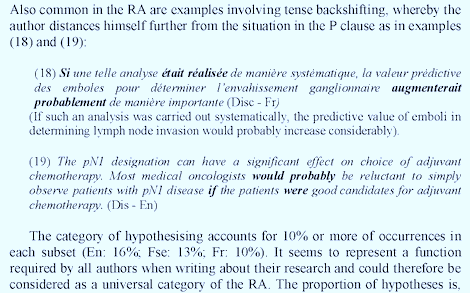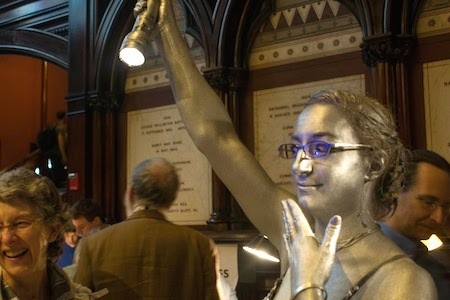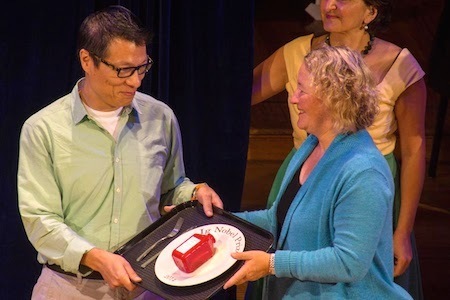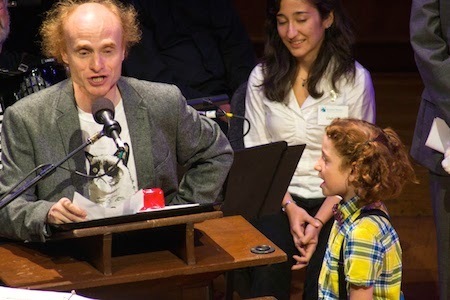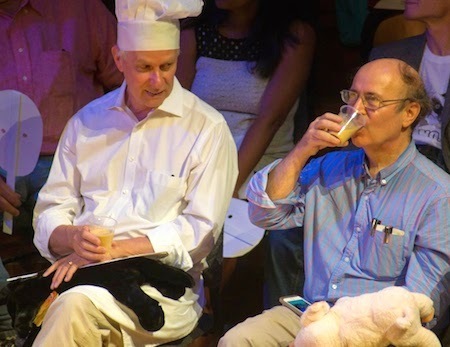Marc Abrahams's Blog, page 373
September 29, 2014
Superpowers for baristas
There’s reported progress in the struggle to give baristas (and their bosses, and their boss’s vendors, too) more reliable info about the identities of their coffee beans.
Details are in the study “Voltammetric Electronic Tongue and Support Vector Machines for Identification of Selected Features in Mexican Coffee,” by Rocio Berenice Domínguez, Laura Moreno-Barón, Roberto Muñoz, and Juan Manuel Gutiérrez [published in the journal Sensors, vol. 14, no. 9, 2014, 17770-17785.]….
So begins another Improbable Innovation nugget, which appears in its entirety on BetaBoston.

September 28, 2014
Concocting pulp covers: The journal Inadvisable Science
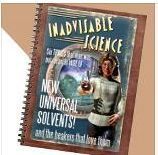 Behold this image — the cover of an imaginary science magazine called Inadvisable Science. It’s concocted using a web site called the Pulp-O-Mizer, that lets you concoct such things.
Behold this image — the cover of an imaginary science magazine called Inadvisable Science. It’s concocted using a web site called the Pulp-O-Mizer, that lets you concoct such things.
(Thanks to investigator Robin Abrahams for bringing this to our attention.)
BONUS: The Department of Inadvisable Science

September 27, 2014
Dropping in on the Ig Nobel after-party
The Ig Nobel after-party, each year, is a chance for the new Ig Nobel Prize winners and the other ceremony participants to get together and let their hair (if they have any) down. Journalist Carmen Nobel came to this year’s party, and wrote about that experience, for Science Friday. Here are snippets of her entire report:
Who’s Got the Biscotti? Mingling at the Ig Nobel Awards After-Party
BY CARMEN NOBEL
At a Boston-area house party this past Saturday, the man of the hour is an 86-year-old Japanese inventor who claims more than 3,500 patents and counting….
Winners travel from all over the world to attend the annual festivities, which include an operatic ceremony at Harvard’s Sanders Theater and a lecture series at MIT. The weekend culminates at the brownstone home of Jackie Baum (an artisanal cookie maker) and Stanley Eigen (a math professor), who have hosted an informal after-party every year since the Prizes debuted. (Read about last year’s party here.)
The guest list comprises past and present Ig Nobel winners; prize ceremony staffers; and local scientists, such as renowned psycholinguist Jean Berko Gleason, who tonight is wearing a medal she won 66 years ago for excelling in 12th grade Spanish. For much of the evening, she discusses Chinese grammatical particles with Kang Lee, a developmental neuroscience professor at the University of Toronto who won the 2014 Neuroscience Prize “for trying to understand what happens in the brain when people see the face of Jesus in a piece of toast.” …
Back in the dining room, honored scholars nibble honey-laced biscotti as they discuss the topics that earned them a spot here.
Members of two research teams bond over their shared Public Health Prize for “investigating whether it is mentally hazardous for a human being to own a cat.” One winning study looked at links between toxoplasmosis and schizophrenia. The other used data from electronic medical records to describe a relationship between cat bites and human depression….
One outstanding question: Why do some dogs walk in a circle before relieving themselves, and what makes them decide whether to go clockwise or counterclockwise?
“We’re looking for a common denominator,” says Sabine Begall, an assistant professor of zoology at the University of Duisburg-Essenand and member of Burda’s team.
Begall was thrilled to win an Ig Nobel. “It’s a lifetime experience,” she says. “Accepting the prize on that stage was the most intense 60 seconds of our lives.”
We eagerly await the day after Thanksgiving, when the Science Friday radio program extends its annual (since 1992) tradition of broadcasting a specially edited version of the year’s Ig Nobel ceremony.

September 26, 2014
Further dramatic readings from bizarre studies, Friday night
 We’ll be doing some more Improbable Dramatic Readings — brief public readings from bizarre — yet genuine — scientific studies, this Friday night, September 26, at Porter Square Books, in Cambridge, Massachusetts, starting at 7:00 pm.
We’ll be doing some more Improbable Dramatic Readings — brief public readings from bizarre — yet genuine — scientific studies, this Friday night, September 26, at Porter Square Books, in Cambridge, Massachusetts, starting at 7:00 pm.
The studies — which we will treat as if they are dramatic literature written for actors to perform — are things I wrote about in my new book This Is Improbable Too.
The guest readers are:
Robin Abrahams (“Miss Conduct” columnist, and assistant opera director at the Ig Nobel Prize ceremony)
Jean Berko Gleason (Boston University Professor Emerita of Psychology, creator of the Wug Test, and deliverer of the “Welcome, Welcome” speech at the Ig Nobel Prize ceremony)
Gary (pork-up-his-nose) Dryfoos (Majordomo at the Ig Nobel Prize ceremony, and new Internet celebrity and press darling because of his photogenic demonstration, at the recent Ig Nobel Prize ceremony, of how and why doctors stuffed cured pork up a patient’s nose)
We’ll also have some copies of my other new book — the one I did together with Corky White and Gus Rancatore — The Ig Nobel Cookbook, volume 1.
Here’s video the WGBH Forum Network made of our most recent Improbable Dramatic Readings event, which was at Harvard Bookstore. The readers that night were Robin Abrahams, Melissa Franklin (Harvard professor of physics, and frequent Ig Nobel performer), Corky White (Boston University professor of anthropology, and author of Cooking for Crowds), and Gus Rancatore (proprietor of Toscanini’s Ice Cream).

Rain, Cricket, Probability, Victory, and You
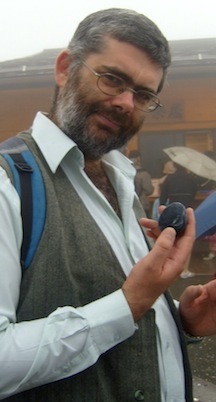 If you are fascinated by rain, cricket, probability and/or victory, give a glance to this study, which ties them all together:
If you are fascinated by rain, cricket, probability and/or victory, give a glance to this study, which ties them all together:
“Rain Rules for Limited Overs Cricket and Probabilities of Victory,” Ian Preston [pictured here] and Jonathan Thomas, The Statistician (Journal of the Royal Statistical Society: Series D), vol. 51, 2002, pp. 189-202. The authors, at University College London, explain:
“The paper discusses the properties of a rule for adjusting scores in limited overs cricket matches to preserve probabilities of victory across interruptions by rain. Such a rule is argued to be attractive on grounds of fairness, intelligibility and tactical neutrality. A comparison with other rules also offers a useful way of assessing the way in which the application of such rules will affect the fortunes of teams in rain-affected games. Simulations based on an estimated parameterization of hazards of dismissal and on numerical dynamic programming methods are used to compare a probability preserving rule with the now widely used Duckworth–Lewis method.”
BONUS: The Duckworth-Lewis Method

September 25, 2014
Potato-chip-sound-modifier Ig Nobel Prize winner profiled
 Charles Spence, 2008 Ig Nobel nutrition Prize winner (for electronically modifying the sound of a potato chip to make the person chewing the chip believe it to be crisper and fresher than it really is) profiled in The Guardian:
Charles Spence, 2008 Ig Nobel nutrition Prize winner (for electronically modifying the sound of a potato chip to make the person chewing the chip believe it to be crisper and fresher than it really is) profiled in The Guardian:
…How to make bug-eating acceptable to westerners is one of the many gustatory challenges that he and his team are tackling. Through his studies into how the senses interact to form our perception of flavour, Spence is quietly influencing what we eat and drink, from the output of food-industry giants (he sits on the scientific advisory board of PepsiCo and much of his lab’s work is funded by Unilever), to the menus of leading restaurants (he has collaborated with Heston Blumenthal for 12 years).
Spence and his peers have, through a line of scientific inquiry that is informally referred to as gastrophysics, studied in minute detail how we experience food and drink. Who we eat with; how food is arranged and described; the colour, texture and weight of plates and cutlery; background noise – all these things affect taste. Now he and his colleague Betina Piqueras-Fiszman have collated this knowledge into a book, The Perfect Meal, packed with insights that are fascinating to anyone in possession of an appetite. For example, the person in a group who orders first in a restaurant enjoys their food more.…
The study that earned Spence and co-author Massimiliano Zampini their Ig Nobel Prize: “The Role of Auditory Cues in Modulating the Perceived Crispness and Staleness of Potato Chips,” Massimiliano Zampini and Charles Spence, Journal of Sensory Studies, vol. 19, October 2004, pp. 347-63.

Comparative ‘iffiness’ of medical research articles
If one could know for sure how iffy things are for English-speaking doctors compared to how iffy things are for French-speaking doctors, one might reach the same conclusions as are reached in this study:
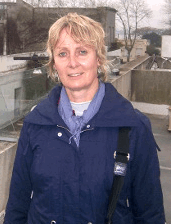 “The ‘iffiness’ of medical research articles —A comparison of English if and French si,” Shirley Carter-Thomas [pictured here], in Language and discipline perspectives on academic discourse, K. Flottum (Ed.) (2007) 150-175. The author, at Université Paris Diderot, explains:
“The ‘iffiness’ of medical research articles —A comparison of English if and French si,” Shirley Carter-Thomas [pictured here], in Language and discipline perspectives on academic discourse, K. Flottum (Ed.) (2007) 150-175. The author, at Université Paris Diderot, explains:
“This paper will consider the functions of English if-clauses and French si-clauses in the medical research article from a cross-linguistic perspective. Such clauses are a frequent feature in research articles in both languages. The various prototypical functions these structures afford, related for example to the non-assertive value of the operator if/si in hypothesising, its logical value (“If X then Y”) and its conditional value specifying the conditions under which a certain claim or fact holds, make them a highly valuable resource in this particular research genre. This importance in the academic research world is also linked to their role as potential polyphonic operators, opening a space for negotiation. The researcher needs both to be cooperative towards peers, recognizing the contribution of others and delimiting the import of his specific research within the community research effort, and at the same time ‘competitive’, creating a new space for the research claims presented. By building, for example, on contrasts or on mutually acceptable assumptions (“If X if admitted…”), the researcher can summon (either explicitly or implicitly) different voices into the text, whilst forcefully negotiating his/her own research claims.”
Here’s a snippet:

September 24, 2014
Ig Nobel and Improbable talks, in Rotterdam Friday
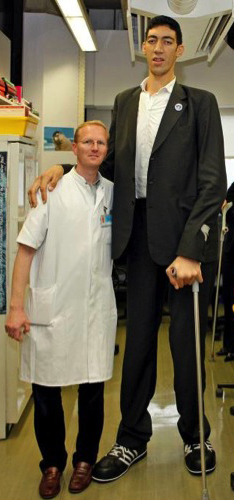 Coming mere days after the Nederlandse Ig Nobel Night (which happened September 20), there will be another Ig Nobel Event in The Netherlands.
Coming mere days after the Nederlandse Ig Nobel Night (which happened September 20), there will be another Ig Nobel Event in The Netherlands.
On Friday, September 26, 2014 at 9:45 pm the New Horizons Festival at the Erasmus University Medical Center in Rotterdam hosts our European Bureau Chief Kees Moeliker who will explain ‘How to win an Ig Nobel Prize?’ Kees will discuss the achievements of this years new Ig Nobel winners.
Kees invited two local researchers to join him, and present their passion for the improbable.
Professor Wouter de Herder (seen here, in the lab coat) will tell the story of ‘The Rotterdam Giant’ (not depicted here).
Dr. Erwin Kompanje will elaborate on the (possible) health benefits of wearing a Scottish Kilt.
All speakers are fluent in Dutch, and will use that language to great advantage.
DETAILS:
New Horizons Festival 2014. Location: Onderwijscentrum, Erasmus University Medical Center, Rotterdam, 9:45 – 10.25 pm. Tickets: here.
BONUS QUESTION: Will Dr. Kompanje wear kilts? Come and see!

Physics Buzz at the Ig (with sound and pix)
The American Physical Society’s Physics Buzz blog visited the 24th First Annual Ig Nobel Prize ceremony. The resulting podcast includes interviews with some of the winners. There are some nice accompanying photos, including these ones, reproduced here with Physics Buzz’s captions:
Natasha Rosenberg, aka “The Human Spotlight” illuminates the way for an Ig Noble aficionado before the ceremony.
University of Toronto neurologist Kang Lee accepts his team’s neuroscience prize from Nobel laureate Carol Greider, for studying why people claim they see Jesus in unexpected places.
Sometimes speeches run long, like Jaroslav Flegr did when he accepted the public health prize for researching the dangers of cat ownership. The solution: Little Miss Sweetie-Poo is on hand to insist that the speaker “Please stop, I’m board!” [sic]
Wilczek enjoys a nice frosty glass of the food substitute Soylent. Fellow Nobel laureate Richard Roberts is having none of it.

Do cats see these optical illusions? Study and video say yes.
Further insight, in this study, on what cats have in sight:
“Cats and Illusory Motion,” Rasmus Bååth [pictured here], Takeharu Seno, Akiyoshi Kitaoka, Psychology, vol. 5, 2014, pp. 1131-1134. The authors, at Lund University, Sweden, Kyushu University, Japan, and Ritsumeikan University, Japan, report:
“Many cat owners have probably looked into their cat’s eyes and wondered how the world looks from its perspective…. We present the first evidence that cats experience visual illusions and that a non-human animal can see illusory motion. In three videos we show cats reacting with hunting behavior when watching the Rotating Snakes illusion. This is taken to mean that cats see illusory motion in this image due to the propensity of cats to pursue movement. This is further supported by a survey where 29% of the respondents answered that their cat reacted to the illusion. A number of preferential looking experiments were also indicative of cats experiencing the illusion, but not conclusively so.”
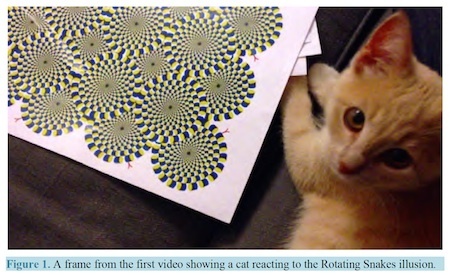
Here is the video:
(Thanks to investigator Rolf Hut for bringing this to our attention.)
BONUS (possibly related): The 2014 Ig Nobel Prize-winning study “Seeing Jesus in toast: Neural and behavioral correlates of face pareidolia“

Marc Abrahams's Blog
- Marc Abrahams's profile
- 14 followers



